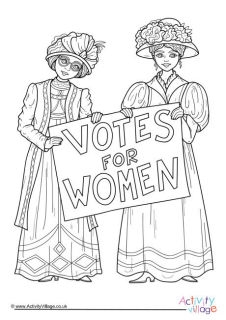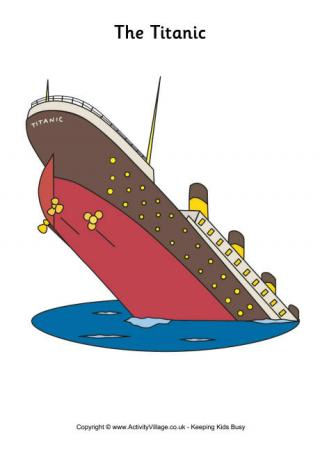Women's Suffrage
We take it for granted today that all men and women over the age of 18 can vote in the UK. Many children are surprised to learn just how hard-fought the battle for equal voting rights was, and how (relatively) recently the right to vote was won by women, and the voting age came down.
Suffrage = the right to vote
You can read our short history of women's suffrage in the UK (written with children in mind) below, then explore our collection of interesting worksheets and other resources or learn about two of the most famous women in the fight for votes for women, Emmeline Pankhurst (suffragette) and Millicent Fawcett (suffragist). We've also included the American author Louisa May Alcott. Not only did she write one of the most famous children's book - Little Women - but she also campaigned for women's suffrage throughout her life.

A Short History of Women's Suffrage in the UK
A 19th century woman's place was in the home, raising her children and looking after her household and husband. Her husband made the decisions and, if he was relatively wealthy and owned property, his vote mattered to the country. Women (and working class men) were regarded as uninformed and were therefore not allowed to vote.
By the middle of the century, the situation began to change as the Industrial Revolution took women into the workplace in large numbers. Conditions were often appalling and they were paid less than men. They worked as hard as their husbands, fathers and brothers but still were not allowed to vote. Women began to meet up to discuss these inequalities and campaign for women's suffrage (the right to vote).
Not all men were happy with the way things were. In particular, John Stuart Mill, a philosopher and Member of Parliament, began to speak out for women. He even took the matter to Parliament in 1867, but was voted down.
Suffragists
One woman who heard what John Stuart Mill had to say and was particularly influenced by him was Millicent Fawcett. She founded the National Union of Women's Suffrage Societies (NUWSS) in 1897. Fawcett and the NUWSS were suffragists, which meant that they believed the vote should be extended. Many of the members were respectable, middle-class women. They believed that they could win the vote for women by proving that women deserved it - using peaceful tactics such as demonstrations and petitions. They realised it might be a slow process, but believed they would get there in the end.
Suffragettes
While the leaders of the suffragists were prepared to be patient, not all their members were! Emmeline Pankhurst was one such woman, and in 1903 she broke away from NUWSS and set up another, more radical society called the Women's Social and Political Union, or WSPU. Members of the WSPU became known as suffragettes - women seeking the vote by organised, and sometimes violent, protest.
Emmeline Pankhurst and her three daughters were activists - they wanted to get things done, whatever it took! The WSPU's motto was "Deeds Not Words" and they were prepared to use extreme methods and violence if necessary. Suffragettes chained themselves to the railings outside Parliament and Buckingham Palace, threw rocks to break windows, interrupted political meetings with shouting and heckling, blew up post boxes and were happy to go to prison for their cause. They recruited young working class women and had branches all over the country.
To get further publicity, women who were imprisoned started to go on hunger strikes. The government didn't want any suffragettes to die in prison and become matrys, so these women were force-fed - a particularly brutal treatment. In 1913, the government passed an act which became known as the Cat and Mouse Act. It allowed Hunger Strikers to be released from prison when they were close to dying, only to be re-imprisoned when their health had improved.
Opinion was very mixed about the tactics of suffragettes at the time - and still is! While many members of the public began to feel sympathy for the way they were treated, others were furious at their lack of respect for property and violent tactics. In the summer of 1913 one particularly dedicated and militant member of the WPSU, Emily Davison, threw herself at the King's horse while it raced at the Epsom Derby, and was killed. Her death shocked the country.
First World War
We will never know whether the tactics of the suffragists and suffragettes would have been successful and when. A year later, the country was at war, and everything changed. Both the NUWSS and WSPU suspended all campaigns and encouraged their members to do what they could to help the war effort, by taking over the jobs of men and freeing them up to fight. Many worked in munitions factories. Some brave women joined the Voluntary Aid Detachment, or VAD, and drove ambulances on the front line. Others went as nurses. And in 1917 the creation of the Women's Auxiliary Army Corps (WAAC) allowed women to take over non-fighting roles to free up more men.
Enfranchisement - Winning the Vote
When the First World War was over, the government realised that changes had to be made to the country's voting system - not only to include women for the first time, but also to give all men (including working class men) the vote. The Representation of the People Act 1918 was passed, on 6th February 1918. All men over 21 could now vote, and most women over the age of 30.
The Representation of the People (Equal Franchise) Act of 1928 extended the vote on equal terms to men and women over 21. And in 1969, the legal age to vote for all was reduced to 18.
Explore Our Women's Suffrage Resources
Women's Voting Rights in Other Countries
1893
- New Zealand
1902
- Australia
1906
- Finland
1907
- Norway
1915
- Denmark
1917
- Canada
1918
- Germany
- India
- Ireland
- Russia
- United Kingdom
1919
- Sweden
1920
- United States of America
1931
Spain
1944
- France
1945
- Italy
1949
- China
1952
- Greece






